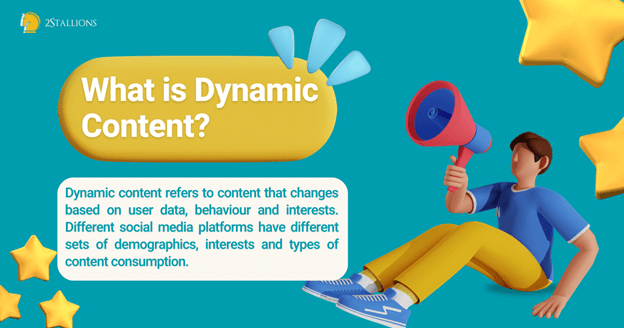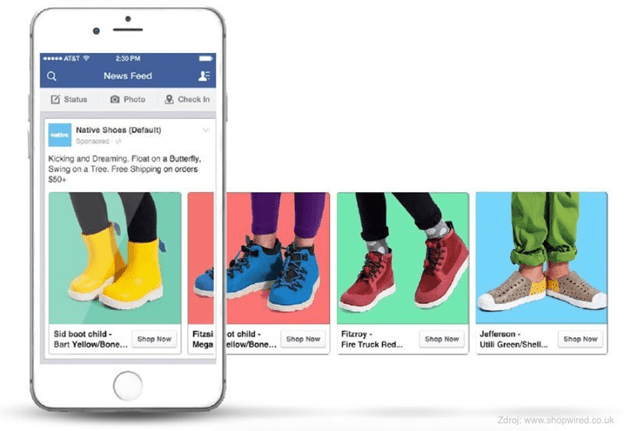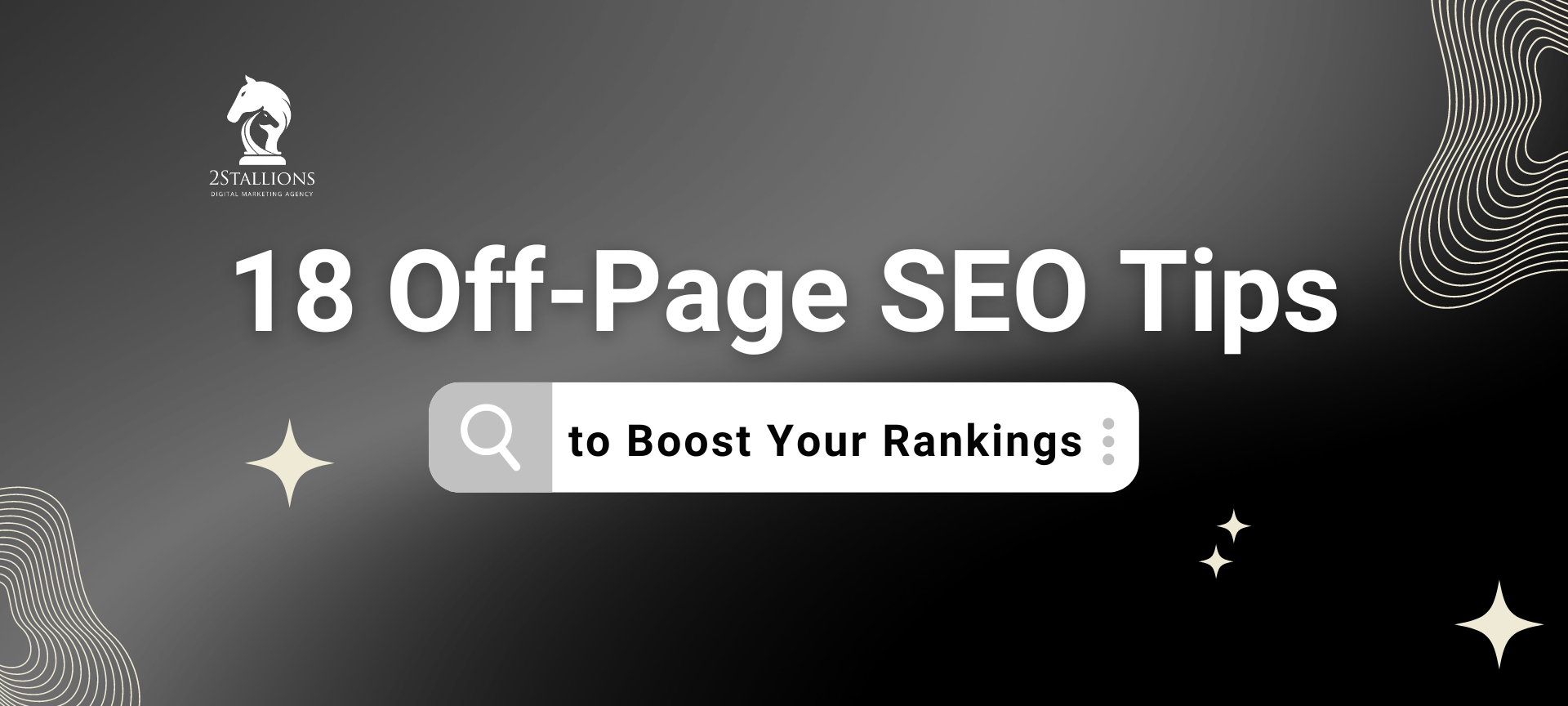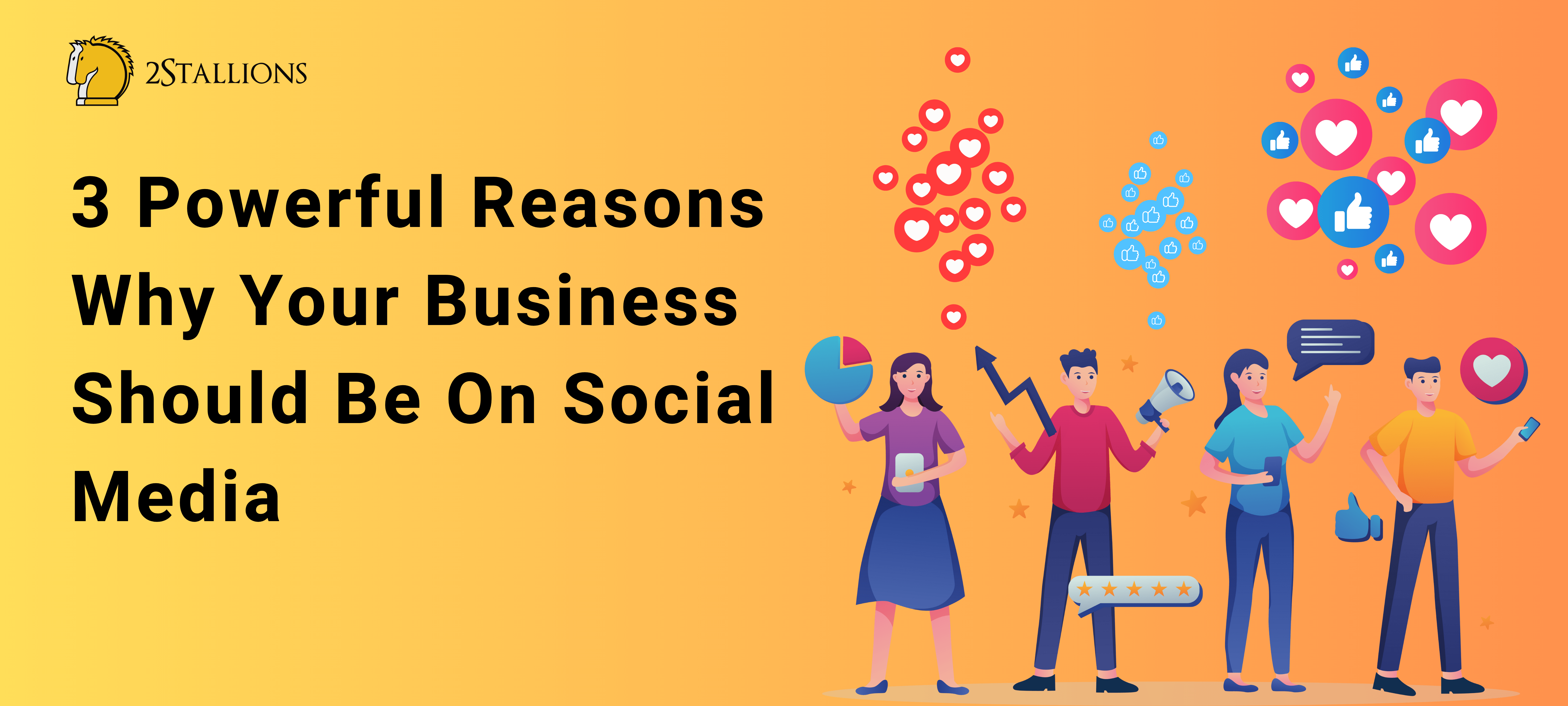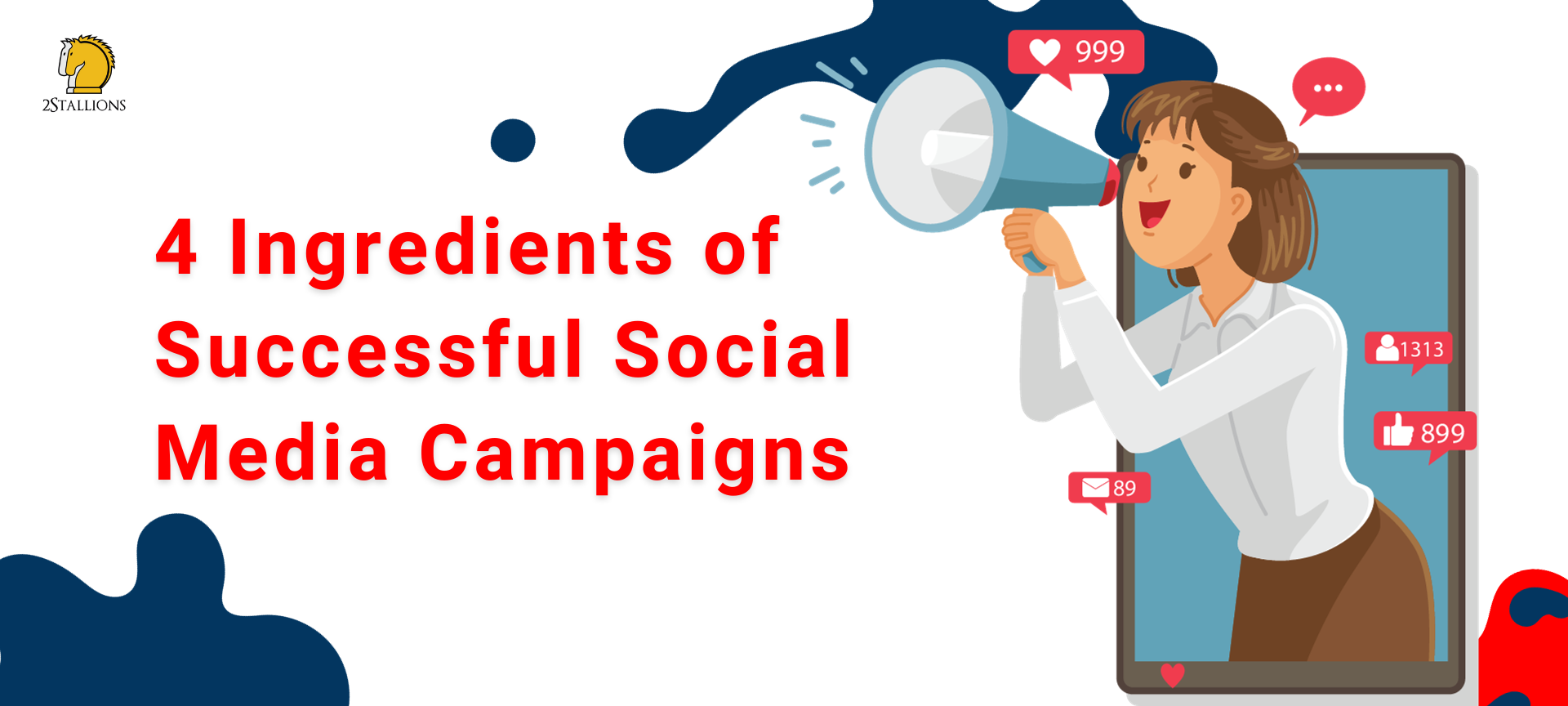Content
SHARE
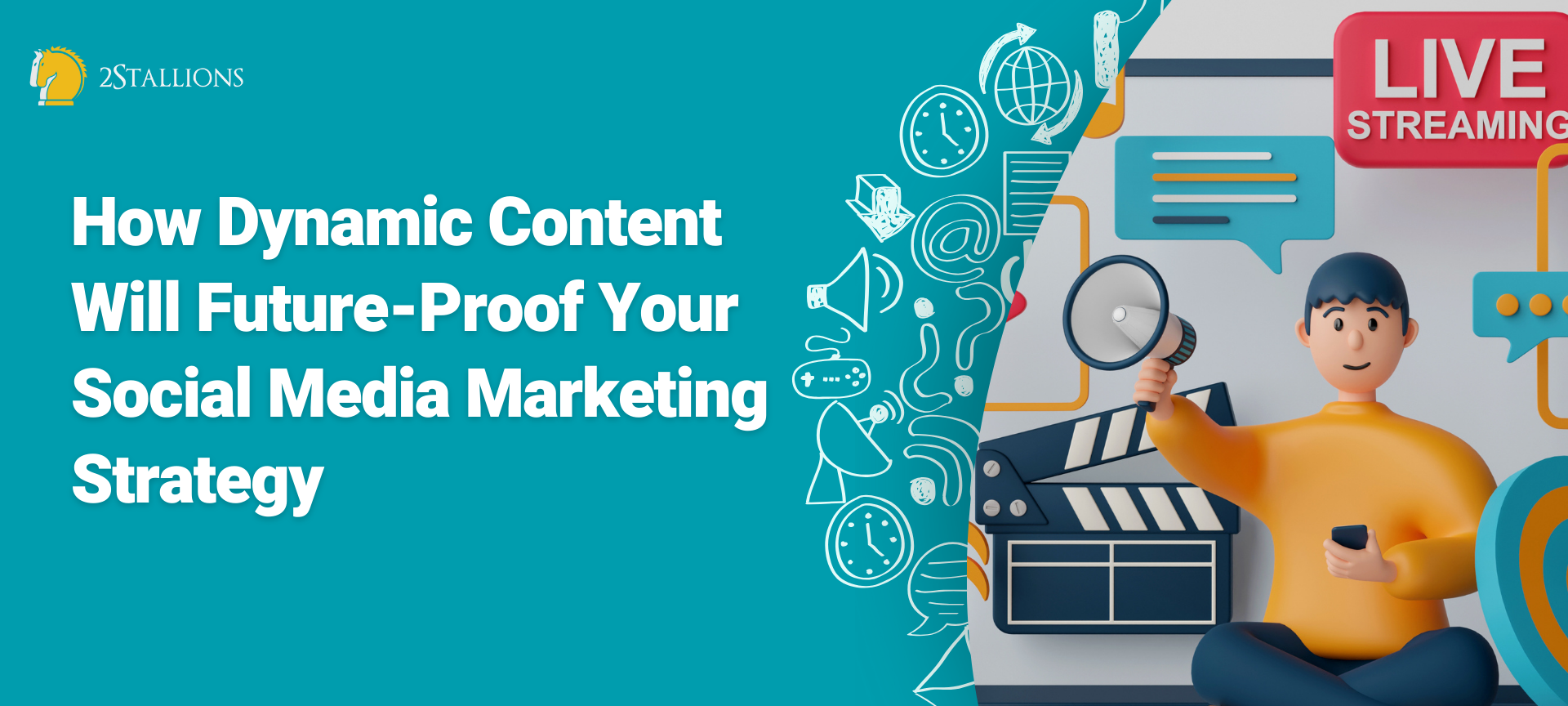
Social Media Marketing Has Revolutionised The Way Marketers Communicate With Customers
Social networks have changed the fundamental ways in which marketers communicate and interact with their customers. Social media has become one of the must-have digital marketing channels for almost all brands. Social media marketing is now an integral part of the marketing mix of any B2C or B2B company seeking direct contact with its customers.
In 2024, there will be 5 billion active social media users worldwide, with 3 billion accessing social media via mobile devices. It’s no surprise that companies continue to turn to social media to reach their target audiences. Marketers who have successfully built a solid social media presence experience greater engagement with their customers and a significant increase in lead generation.
- Global advertising spending is expected to increase by 4.6% in 2024, reaching a peak of $752.8 billion (Dentsu)
- 86% of people use social media at least once a day, and 72% of people use social media multiple times a day (WebFX)
- 27% of social media users look for inspiration for things to buy or do (GWI)
- 2% of social media users use the platforms to find products to purchase (GWI)
During the COVID-19 pandemic, social media took off even more than before as people turned to the Internet to stay connected to loved ones. This is coincidentally the first and foremost reason why people use social media. Even now that most countries are out of their lockdowns and vaccines are slowly pushing the pandemic into the history books, social media is still a go-to place for people of all ages to connect and share. As a result, social media marketing remains an essential strategy for businesses.
Future of Social Media Marketing – Take a Dynamic Approach
While social media marketing is immensely valuable and beneficial to your business growth, your social media strategy will have to differ based on which social networks your audience spends their time on.
Consider the following data:
Your target audience may be on one or more platforms – or they may be on five or six! To get the most out of any social media marketing strategy, you will need to create dynamic content that is interesting for your target audience and adapt to each platform you will use to reach them.
What is Dynamic Content?
Dynamic content refers to the personalised information delivered to users based on their specific data, preferences, characteristics, and on-site behaviours. This can include personalised product recommendations, tailored content based on past interactions, user-specific notifications, and more.
Dynamic content is linked to personalisation and an optimal user experience because it allows customisation of the user’s interaction with a website or application. By leveraging user data and preferences, dynamic content can create a more personalised and relevant experience for the user, ultimately increasing engagement and satisfaction.
For example, showing personalised product recommendations based on a user’s past purchases or behaviours makes them more likely to quickly find what they are looking for, leading to a more satisfying user experience. Dynamic content is crucial in personalising and enhancing the user experience by delivering relevant and tailored information based on their unique characteristics and behaviours. This ultimately leads to higher user satisfaction and engagement.
The Components of Dynamic Content On Social Media
A dynamic approach can be applied to all social media content, e.g., Facebook dynamic ads. A dynamic approach can be applied to content and paid social ads (including retargeting ads). Whether it’s content or paid ads, the type and presentation of content will have to change based on the behaviour and interests of the target audience.
The key is customisation and personalisation.
Dynamic Paid Ads
For paid ad campaigns, the most common practice is customising blocks of tailored content (ads) displayed on social media according to the rules for particular subscriber groups. Using tools such as Facebook Dynamic Ads and LinkedIn Dynamic Ads, marketers can customise the “look” of the ad and leverage the various targeting options available. When marketers create retargeting ads, they can target a group of customers who are most likely to convert (for example, customers who have left items in the cart or have browsed your site previously).
Creating a Facebook Dynamic Ad
When you create a dynamic ad, choose assets that make sense together when combined. You can choose up to 30 assets for your dynamic creative ad.
You should also:
- A/B test best call-to-action buttons
- Reach the right people with the use of pixels
- Keep the text short, clear and to the point
- Draw attention to your image with movement/ formats
A sample of a Facebook Dynamic Ad
Dynamic Monthly Social Content
Marketers should also plan their monthly social media calendar using insights from your channels according to their customers’ interests and purchase intent. These can be gathered using the page insights function that all your social channels will have.
Tips for planning your social media calendar:
- User Segmentation for Personalised Content:
User segmentation is pivotal in tailoring your content to specific audience groups. By dividing your visitors into distinct segments, you can customise your messaging and user experience for maximum relevance. To implement this successfully, refer to our comprehensive guide on creating a customer strategy. This will provide valuable insights into identifying and targeting different audience segments effectively. - Harness Consumer Insights for Informed Decision-Making:
One of the cornerstones of a successful social media calendar is collecting and analysing relevant data. Focus on gathering consumer insights from the products or services users have shown interest in. This data will serve as a foundation for understanding user preferences, behaviours, and trends—Utilise analytics tools to track user interactions, preferences, and behaviours on your platforms. - Adapt Your Branding and Creative Approach Dynamically:
As you accumulate data, adapting your branding and creative approach is crucial. Regularly evaluate the collected data to identify patterns and trends. This information should guide your content type, style, and overall messaging adjustments. By staying dynamic and responsive, you can ensure that your brand remains fresh and aligned with the evolving preferences of your audience. - Optimise Content Types and Styles:
Diversify your content types and styles based on the insights gained from user behaviour and preferences. Experiment with formats such as images, videos, infographics, and written content. Tailor the tone and style of your messaging to resonate with specific audience segments. This adaptability will keep your content strategy versatile and engaging. - Align Social Media Calendar with Overall Marketing Strategy:
Integrate your social media calendar seamlessly into your overall marketing strategy. Ensure that the content aligns with broader campaigns and initiatives. Consistency in messaging across different channels fosters a cohesive brand image and reinforces key brand messages. - Regularly Review and Refine Strategies:
Social media landscapes and user behaviours are dynamic, so reviewing and refining your strategies is essential. Conduct periodic assessments of your social media performance, analyse feedback, and stay updated on industry trends. This iterative approach will enable you to fine-tune your social media calendar for sustained effectiveness.
How Dynamic Content Future-Proofs Your Social Media Strategy
A one-size-fits-all social media content won’t cut it anymore. To reach customers on TikTok, Facebook, LinkedIn, X (formerly known as Twitter), and Instagram, you must tailor your approach to each platform. Your customers are increasingly demanding. They expect their interactions with businesses on social media to be tailored to who they are, their goals, and their needs. Marketers must adopt a flexible strategy to reach their customers at multiple touchpoints to maintain a competitive advantage. That is why we recommend a dynamic strategy to deliver long-term value and drive social ROI for any company.
A Dynamic Approach Optimises Your Content to Drive Conversions and Sales Faster
Dynamic content is your first step towards better audience targeting to increase social ROI and achieve business results for your brand. It is a versatile and cost-effective strategy to help businesses receive the most return on ad spend. With a dynamic approach, marketers optimise content that will appeal to their existing and potential customers.
With dynamic ads, you can:
- Reach more customers: Show people items tailored to their interests, regardless if they’ve been to your website or app.
- Complete the sale: Dynamic ads retarget your website or mobile app shoppers to remind customers of items they’ve left in their shopping cart.
- Find new potential shoppers: Using a function known as broad audience targeting, you can reach new people who’ve expressed interest in your products (or similar products) even if they haven’t visited your website or app yet.
- Save time on creating ads: Marketers must create an ad template that automatically uses images and details from your catalogue for products you want to advertise.
As a result, dynamic ads help quicken the conversion process and increase conversion rates because you target customers with the greatest probability of buying from you. Rather than incurring a huge ad spend on a general audience, marketers will achieve better results with the least possible ad spend by selling to customers with the highest purchase intent across all the marketing funnel stages.
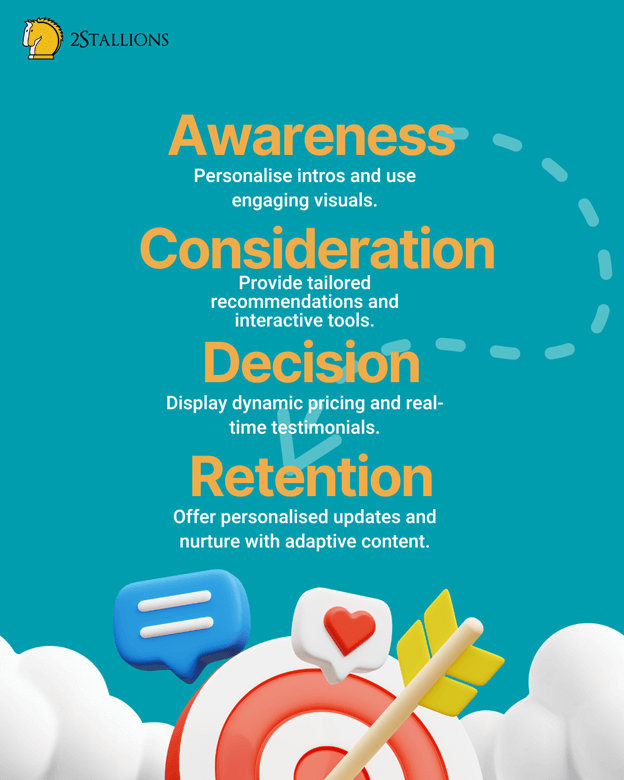
Boost Engagement – Get the Strategies Guide!
Wrapping Up
The steps we’ve provided for you to create a dynamic strategy are relevant for Facebook and other social media channels. Feel free to adopt any of our tips and start creating your dynamic strategy today!
Elevate your online strategy with 2Stallions, Singapore’s champions of digital engagement. Experience top-tier social media marketing that makes your brand shine! Embrace the transformation – Connect today!
Originally published: 25 November 2022
Updated: 20 December 2023
Elevate your online strategy with 2Stallions, Singapore’s champions of digital engagement. Experience top-tier social media marketing that makes your brand shine! Embrace the transformation – Connect today!
Frequently Asked Questions About Dynamic Content
”What
Dynamic content is website or app content that changes based on user behaviour, preferences, or other real-time data. Unlike static content, which remains constant for all users, dynamic content is personalised and adapts to individual interactions, providing a more tailored user experience.
”How
Dynamic content enhances user engagement by delivering personalised and relevant information to each user. By leveraging user data, dynamic content adapts in real-time, increasing the chances of capturing user interest, prolonging time spent on a website or app, and ultimately improving overall user satisfaction.
”What
Common technologies for implementing dynamic content include content management systems (CMS) with dynamic capabilities, server-side scripting languages (e.g., PHP, Node.js), and client-side technologies like JavaScript. Application Programming Interfaces (APIs) also play a crucial role in fetching real-time data for dynamic content.
”How
Dynamic content significantly enhances personalisation in marketing by tailoring messages, images, or offers to individual users based on their preferences, behaviour, or demographics. This level of personalisation improves the relevance of marketing campaigns, leading to higher engagement, conversion rates, and overall campaign effectiveness.


